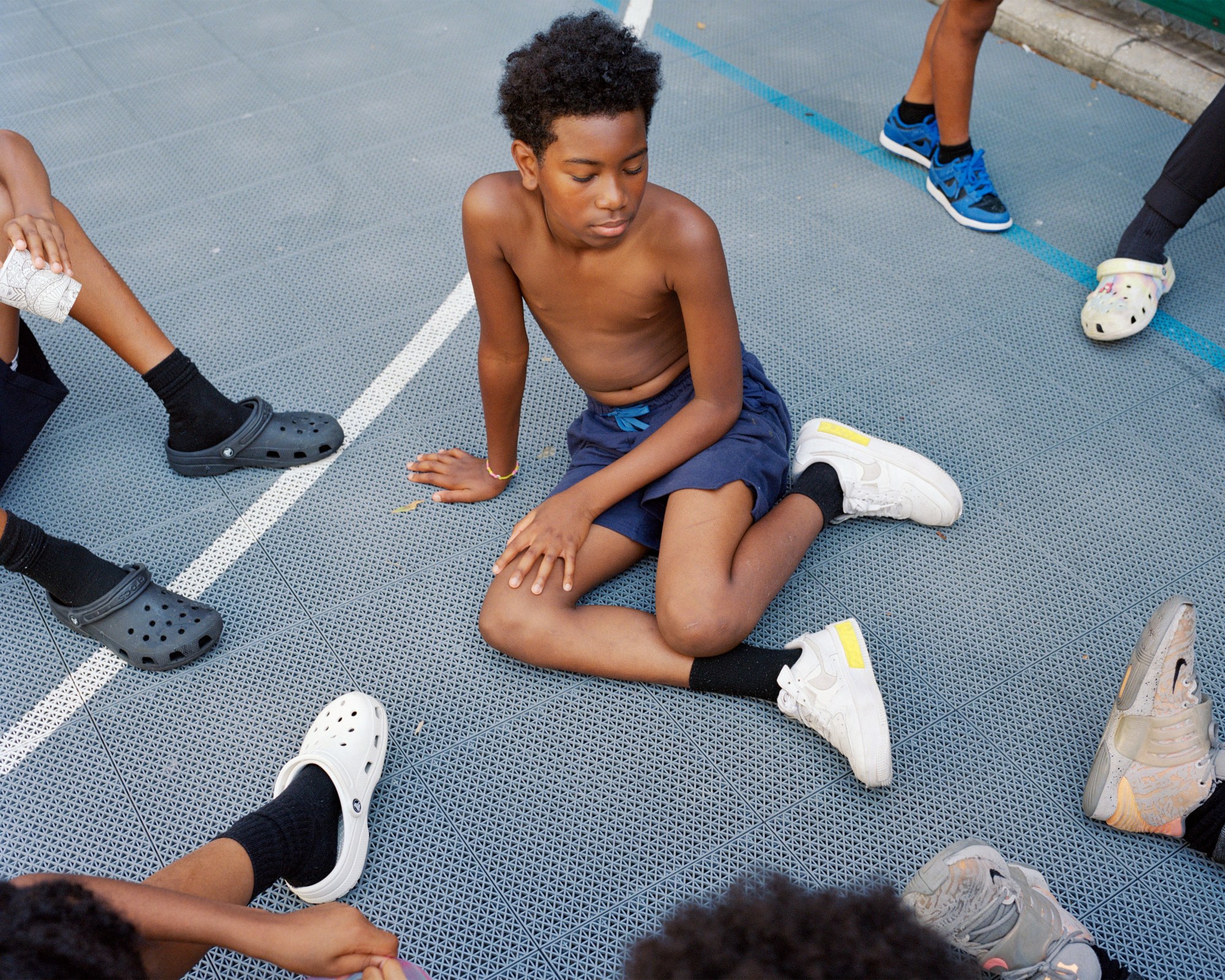In an untitled photograph, a young boy in turquoise shorts and glasses plays on the sidewalk. He seems enamoured by a small leaf floating in a puddle, the water reflecting him and the light of his surroundings to the viewer. In a second photograph, a boy dressed in a vibrant blue-and-red shirt closes his eyes as his friends rest their hands on his head.
The French-Sri Lankan photographer Vasantha Yogananthan took these intimate portraits of children and their friends in the summer of 2022 in New Orleans, Louisiana. Vasantha created the series Mystery Street as part of Immersion, a French-American photography programme by the Hermès Foundation. “As a French photographer, you have to pick a place in the US,” the self-taught artist tells me, explaining that he chose a location he would not find difficult to navigate or have trouble connecting with. “Picking New Orleans was also adding a dystopian side to the story as I was interested in the fact that all the children were born after Hurricane Katrina,” he says. “They were born after the city was partly destroyed, so they are growing up in a place that will be the first to disappear in the US because of climate change.”
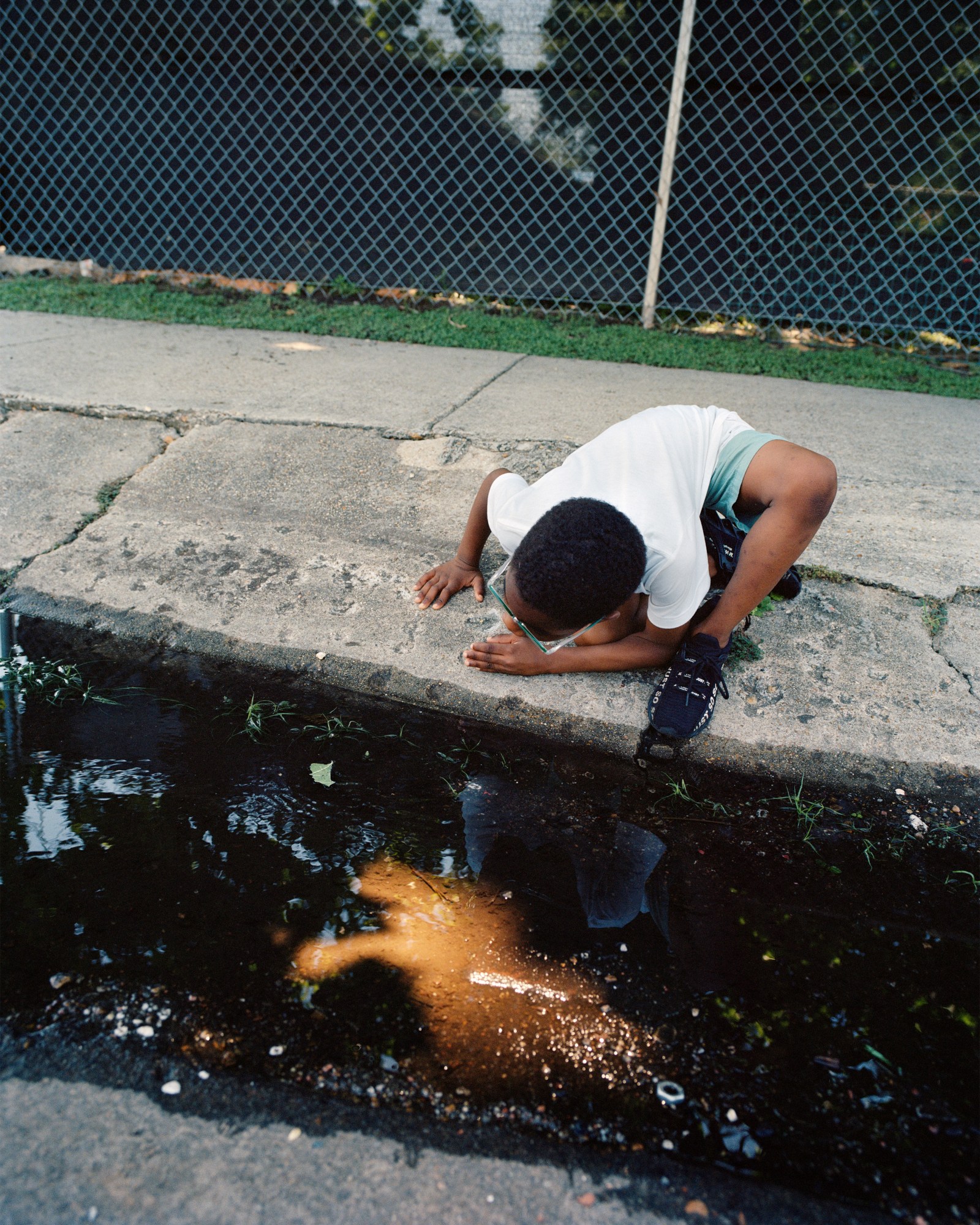
While Mystery Street – shortlisted for Prix Pictet, widely considered one of the world’s most prestigious prizes in photography – captures candid moments in young children’s lives in a post-Katrina New Orleans, Vasantha doesn’t see his work as factual. Instead, he says it is “a very thin fraction of reality,” which he calls “post-documentary”. “A photographer is experiencing a lot of things at the same time: the city, human relationships, and taking in a lot of information,” he says. Once he has collated an extensive collection of photographs, he provides a small aspect for viewing, “keeping only the essence” of what he is portraying.
For three months, Vasantha met the same group of children from around 8am, staying with them until sunset. He says he eventually blended into the background, which allowed him to capture honest moments between friends. “They knew I was there and that I was taking pictures, but at the same time, it was as if I was a ghost,” he says. “I’ve never had such an experience as a photographer.”
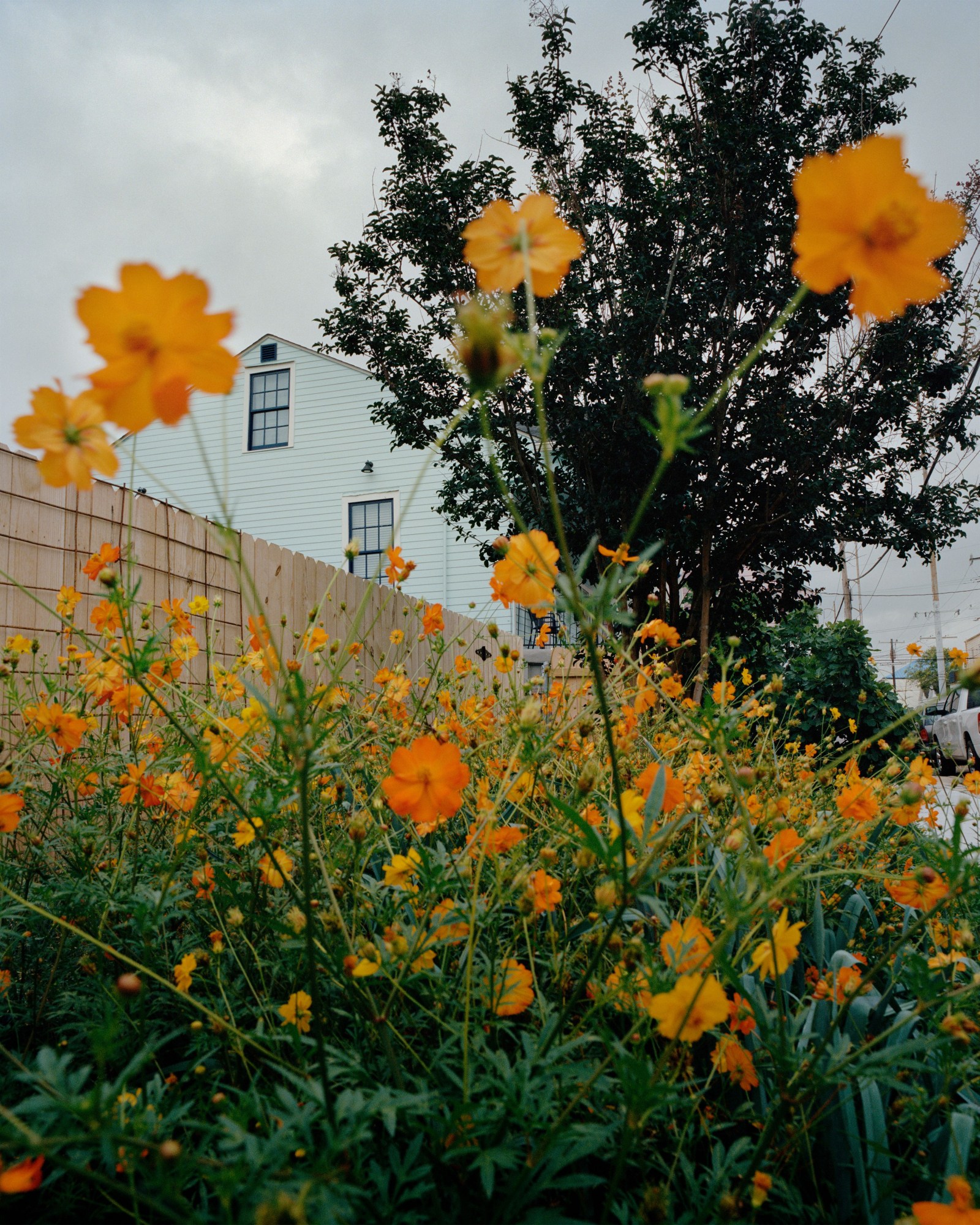
As most of these images are portraits, it almost feels like adults don’t exist in the world he captures, something the artist has acknowledged. “The fact that it’s only focusing on children makes it feel as if you’re following them in a city where the adults have disappeared,” he says, noting that this also plays into the idea of dystopia. “What would happen in a world where adults are gone, and children are in charge?” he asks. “[The children] make the landscapes theirs, though it’s a landscape that adults have shaped before they were born.”
It’s also difficult not to notice that many of the images in Mystery Street series are of young Black boys interacting with their friends, many of which Vasantha believes “function as portraits of the space between two people”. He points out that “when you see someone’s face shot from another kid’s shoulder, you don’t only see the children facing the camera, but the physical body and presence of his friend and the way the two are connected”. When looking at children, especially young boys, before they reach teenagehood, it captures the moments before the pressure of masculinity shapes their personalities and how they express themselves.

“The fact that the boys were very close physically was profound because they will not be close anymore when they are teenagers,” he says. Vasantha also observed that children grew up faster in less privileged parts of New Orleans than in wealthier, whiter areas. “My intention was to show that there’s fragility, happiness, sadness and feelings that are very complex.”
But women are not forgotten. In one untitled photograph in the series, two girls are playing together next to a red wooden bench. “I didn’t take many photographs of girls because it was harder for me as an adult French man to connect with a group of girls on such short notice,” he says. The boys and girls he interacted with also often socialised separately. “It was crazy to see that even at that age, there’s already a line.”
While there are many moments in Vasantha’s photographs that have a lot to offer on what it means to grow up in a certain part of America, Vasantha reiterates that it is not a document about childhood in New Orleans. “It’s a fictional document of a shared time between one person – the photographer – and 15 children over one summer,” he says. “Hopefully, it speaks to people about universal feelings and emotions we can all feel no matter where we live in the world.”
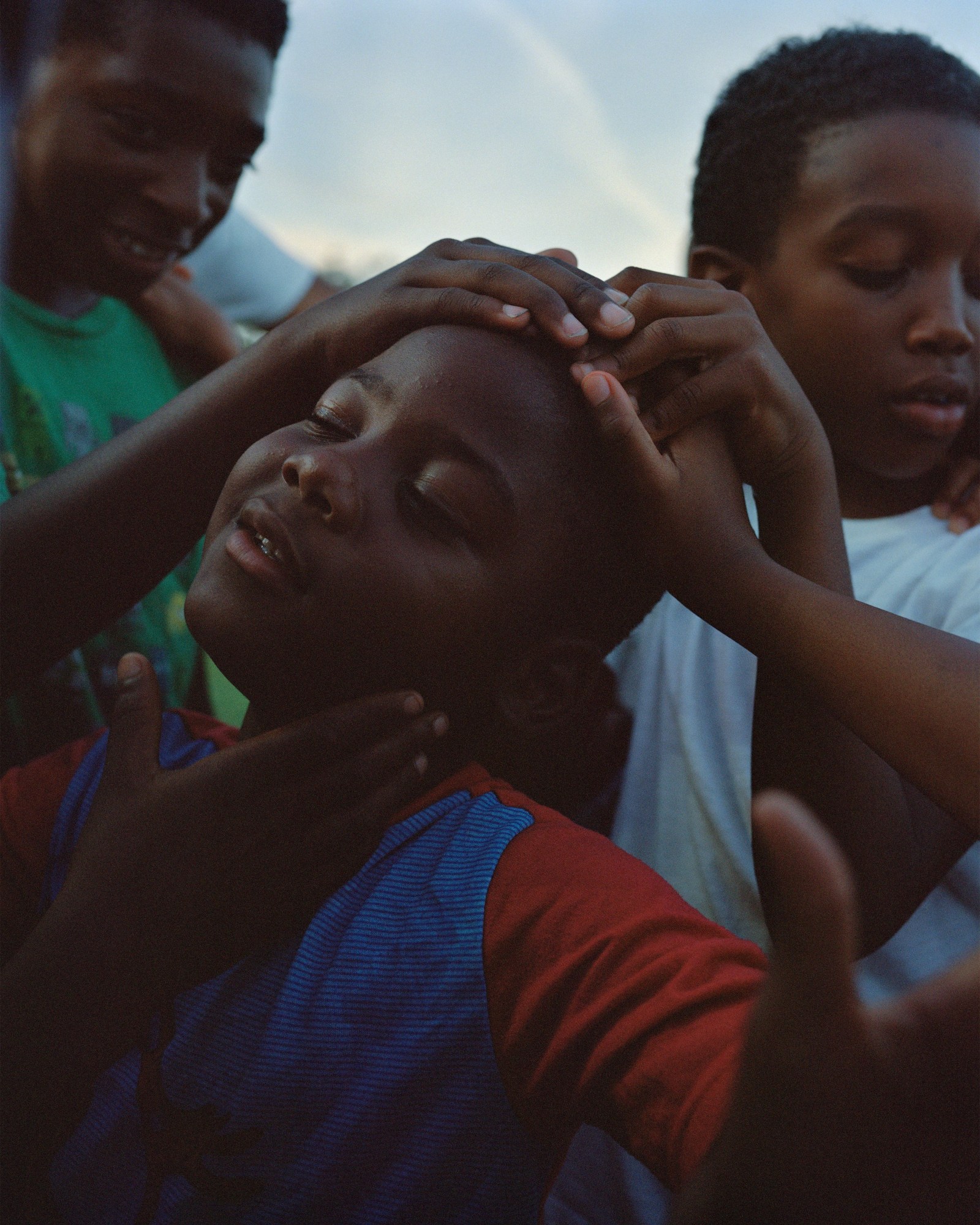
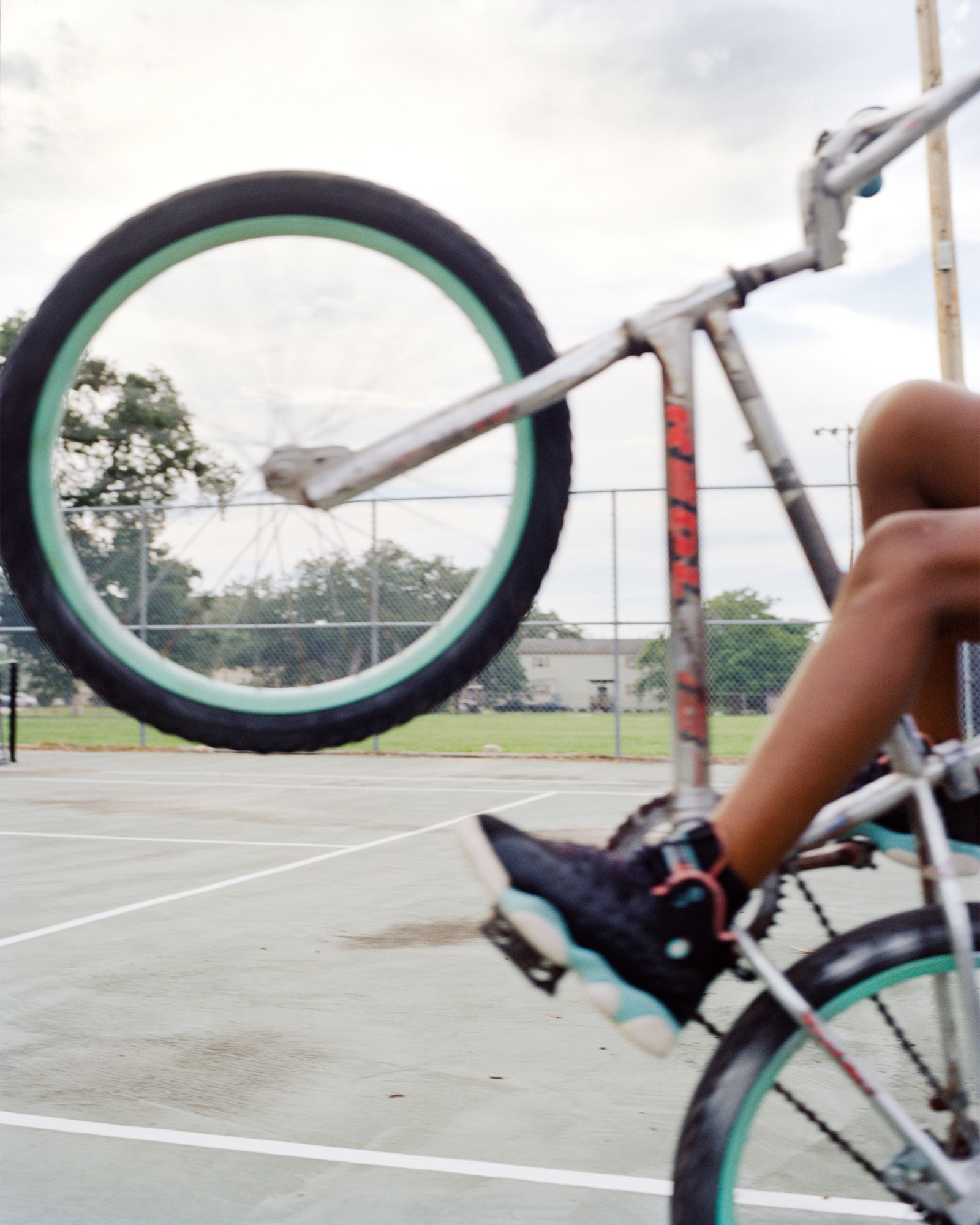
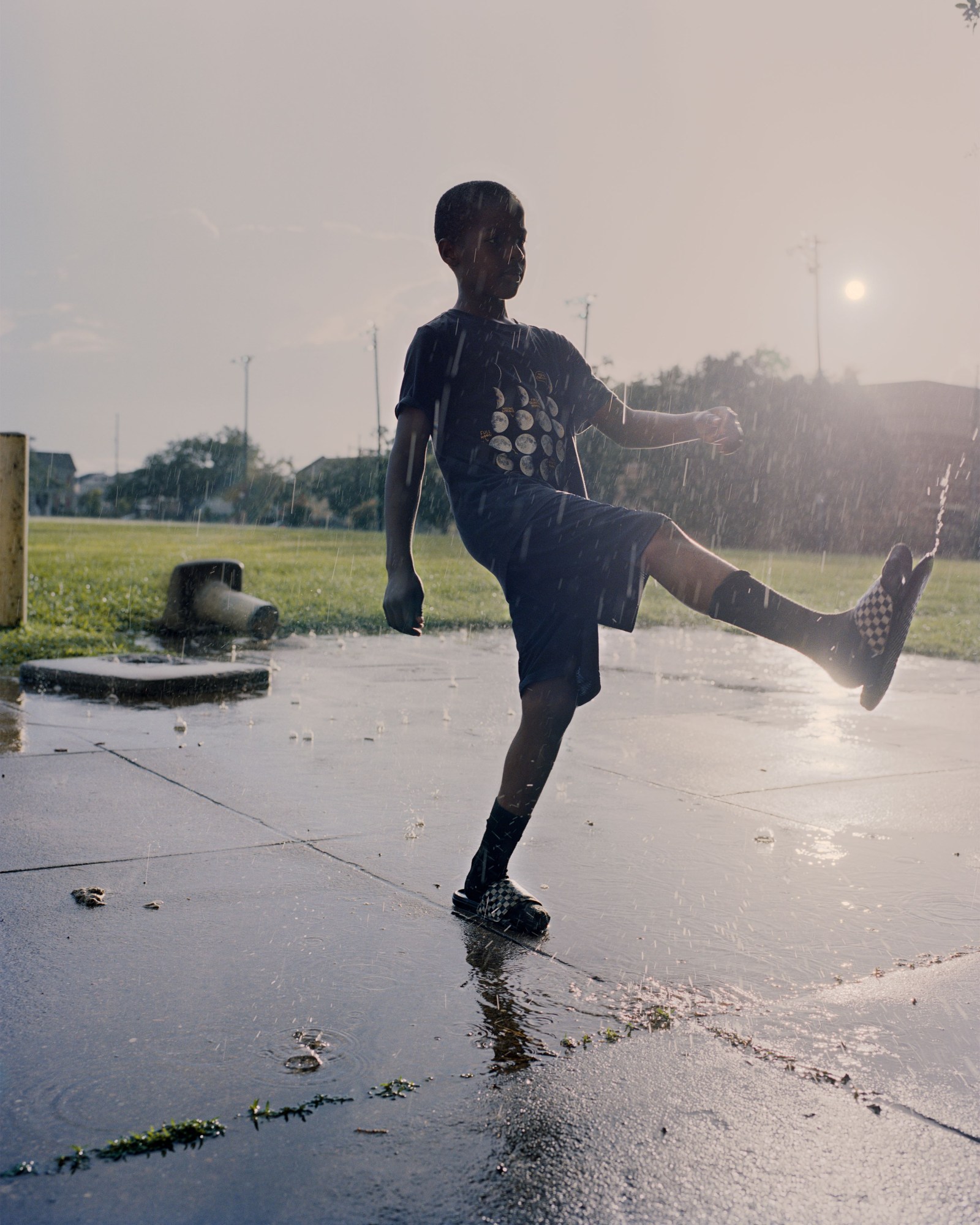
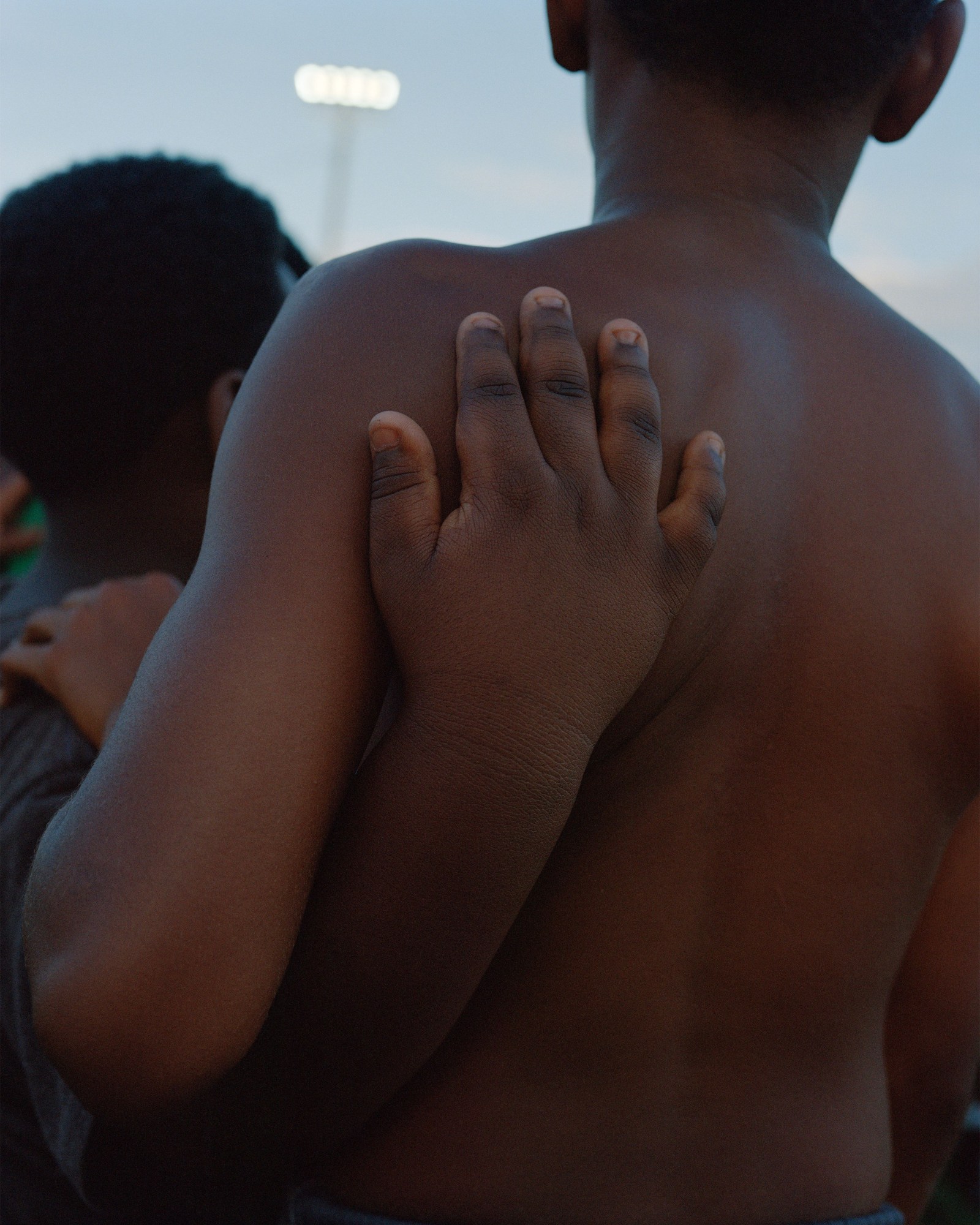

Credits
All images courtesy Vasantha Yogananthan
